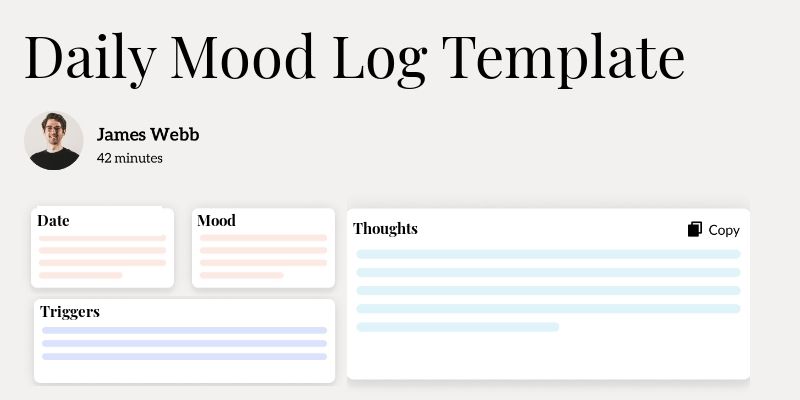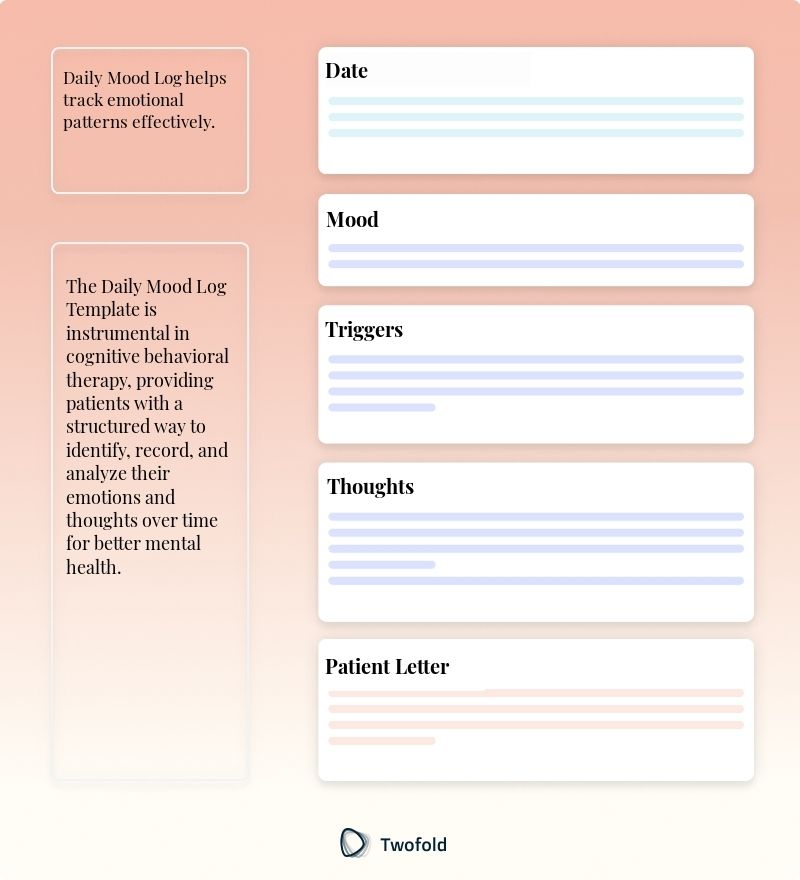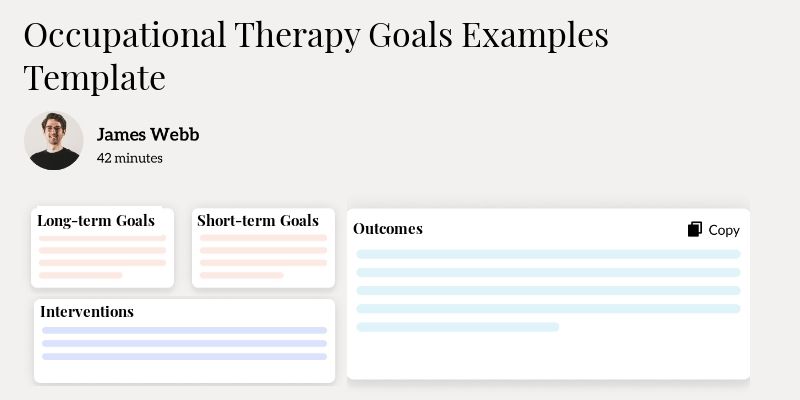
Daily Mood Log Template
Imagine waking up each day unsure of your emotions or struggling to track the nuances of your mood. It can be a frustrating experience for anyone trying to make sense of their mental well‑being. Luckily, the Daily Mood Log Template provides an organized way to document and reflect on daily emotional states, making it an invaluable tool for both patients and professionals seeking clarity. Let's explore how this template can simplify the complex task of mood tracking.
What Is a Daily Mood Log Template?
A Daily Mood Log Template is a structured framework used to record and evaluate one's emotions on a day‑to‑day basis. This template allows individuals to document their moods systematically, often involving specific times, activities, and intensity of emotions.
Such a log helps in identifying patterns, triggers, and correlations between various emotions and daily activities, proving beneficial in therapeutic settings or personal development.
Key Components of a Daily Mood Log Template
At its core, the Daily Mood Log Template is designed to capture concise and essential details about one's emotional state.
- Date and Time: Notes when the mood was experienced.
- Mood Description: Captures the specific emotion or feeling.
- Intensity Scale: Rates the emotion's severity, often on a numerical scale.
- Trigger Activity/Thought: Documents potential causes or correlates of the mood.
- Reflection Comments: Provides space for insights or thoughts about the experienced mood.

How to Use a Daily Mood Log Template: Step-by-Step Process
Start Your Day with Intent
Begin by noting your baseline mood upon waking. This sets the stage for daily tracking.
Document Key Emotional Fluctuations
Throughout the day, log significant shifts in mood alongside triggers or activities that may have influenced these changes.
Rate Your Moods
Using a numerical scale to assign intensity levels to each recorded emotion for better analysis.
Reflect at Day's End
Conclude with a short reflection to highlight any recurring patterns or insights gained, paving the way for improved emotional awareness.
Benefits of a Daily Mood Log
Benefit | Description |
|---|---|
Emotional Awareness | Enhances recognition of emotional patterns over time, helping individuals and therapists comprehend underlying causes. |
Mood Management | Empowers users to develop strategies for managing emotions, mitigating negative impacts on daily life. |
Communication Aid | Facilitates discussions with mental health professionals by clearly illustrating emotional trends and triggers. |
Goal Setting | Sets a foundation for targeted mental health goals aligned with observed emotional patterns. |
Stakeholders in Daily Mood Logs
The Daily Mood Log Template benefits a range of stakeholders who interact directly with mood documentation.
- Patients: Like Elisa, a patient managing anxiety, who finds solace in visualizing her progress and identifying stressors.
- Therapists: Such as Peter, incorporating logs into therapy sessions to track his clients' emotional health systematically.
- Caretakers: For example, Sarah, a mother keeping tabs on her teen's wellbeing amidst school pressures.
- Researchers: For academics like Dr. Kumar, using aggregated data from logs for psychological studies.
Example of a Daily Mood Log PDF
For a practical understanding, examine a Daily Mood Log PDF that exemplifies the structure and flow of daily entries, offering a blueprint for effective mood tracking.
Real-World Use Cases: Practical Impact of the Daily Mood Log Template
Observing the real‑world applications of mood logs reveals their transformational impact on mental health management.
- Anna, a university student, leverages mood logs to navigate her transition away from home, leading to improved interpersonal relationships.
- Derek, navigating a challenging work environment, uses his logs to implement stress-reduction exercises with clear, measurable outcomes.
- In counseling practice, Marie adapts her approach based on client logs, tailoring therapy sessions to align with documented emotional patterns.
- Community health programs pilot mood logs to gauge participant wellbeing, influencing policy adaptations at a local level.
Conclusion
The Daily Mood Log Template proves to be an effective instrument in unfolding the intricacies of emotional well‑being. It empowers users by offering structured insights into emotions, promoting self‑awareness, and fostering communication between clients and practitioners. By sharing real‑life applications and expert tips, this guide shines a light on how a targeted approach to mood tracking can enhance mental health practices across various contexts.
Disclaimer: This article is for informational purposes only and does not constitute legal or medical advice. Always consult professional guidelines and regulatory bodies for specific compliance requirements.

Dr. Danni Steimberg
Dr. Danni Steimberg is a pediatrician at Schneider Children’s Medical Center with extensive experience in patient care, medical education, and healthcare innovation. He earned his MD from Semmelweis University and has worked at Kaplan Medical Center and Sheba Medical Center.
A mood log is most useful when it captures patterns you can act on, not just feelings in the moment. The TIDE cycle – Time, Intensity, Driver, Effect – keeps each entry fast to fill and clinically meaningful.
- Time stamp consistently: Log moods at set checkpoints (morning, midday, evening) to reveal diurnal swings and medication gaps.
- Intensity 1-10: Rate the feeling on a simple scale; numeric data makes progress visible and supports insurance reviews.
- Driver snapshot: Jot the trigger or context in a few words (“team meeting”, “skipped lunch”) so therapy can target real-world stressors.
- Effect and next action: Note any coping skill used and how the mood shifted; this closes the loop and guides evidence-based treatment tweaks.
Frequently Asked Questions
Reduce burnout,
improve patient care.
Join thousands of clinicians already using AI to become more efficient.

Anxiety Journal Template
Discover practical Anxiety Journal templates to enhance your documentation efficiency.

Dental Chart Template
Discover practical Dental Chart Template templates to enhance your documentation efficiency.

Occupational Therapy Goals Examples Template
Discover practical Occupational Therapy Goals Examples Template templates to enhance your documentation efficiency.

